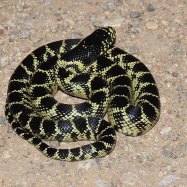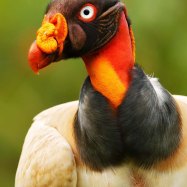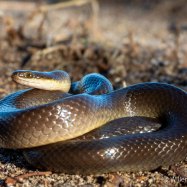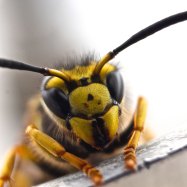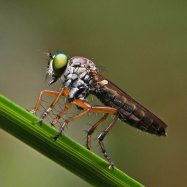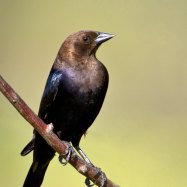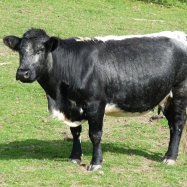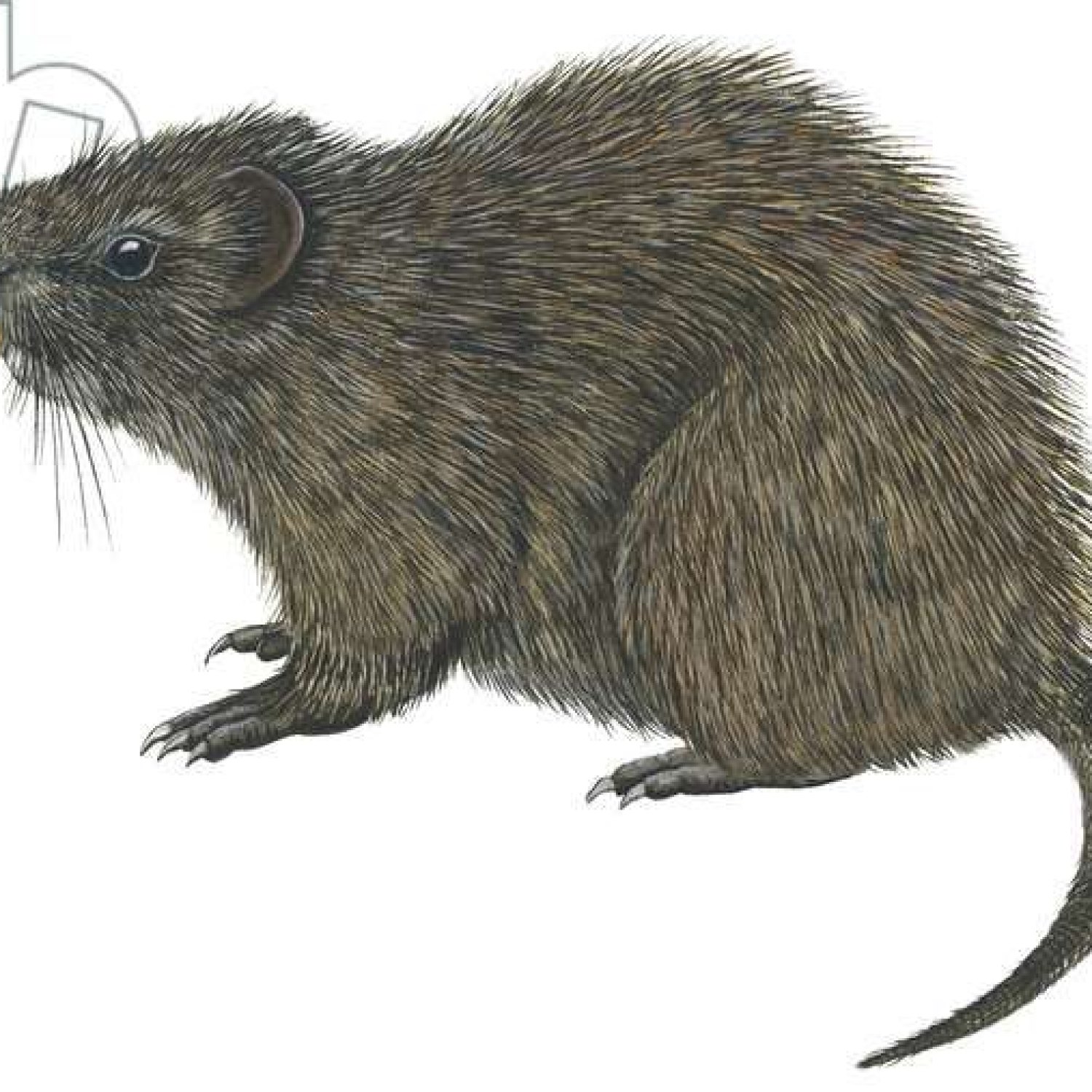
Cane Rat
45 - 60 cm
The Cane Rat, also known as the grasscutter, is a medium-sized rodent found in Southern, Central, and West Africa. With a stocky body and a length of 45-60 cm, it belongs to the Thryonomyidae family. These herbivorous animals are important for the ecosystem and play a vital role in seed dispersal. However, they are also consumed as a delicacy in some African countries. #CaneRat #Africa #rodent #ecosystem
Animal Details Summary:
Common Name: Cane Rat
Kingdom: Animalia
Habitat: Wetlands, grasslands, and forests
The Fascinating World of Cane Rats: Herbivorous Giants of Africa
When one thinks of Africa, the first images that come to mind are usually that of vast savannahs, majestic elephants, and fearsome lions. However, amidst the towering giraffes and powerful rhinos, there is a relatively unknown animal that is just as fascinating and vital to the ecosystem – the cane rat.Despite their name, cane rats are not actually rats but rather members of the family Thryonomyidae, which includes the genus Thryonomys and Atherurus. These animals are well-adapted to survive in the wilds of Africa, with their stocky bodies and herbivorous diets Cane Rat. In this article, we'll delve into the intricate world of cane rats, learning more about their biology, behavior, and their crucial role in the African ecosystem.
The Scientific Details of Cane Rats
Before we dive into the exciting aspects of the cane rat, it is important to understand its scientific classification. The scientific name of the cane rat is Thryonomys swinderianus, and it belongs to the kingdom Animalia, the phylum Chordata, the class Mammalia, and the order Rodentia. The family Thryonomyidae is exclusive to the African continent, with two genera, Thryonomys and Atherurus.The cane rat can be found in various countries in Africa, but its main geographic distribution is in southern, central, and West Africa. These animals prefer wetlands, grasslands, and forests, making their homes in the dense vegetation often found in these regions.
The Physical Characteristics of Cane Rats
Cane rats are medium-sized animals with a stocky body shape. On average, they grow to be 45-60 cm in length, with a weight of 8-10 kg. They have short, coarse fur that is usually a brown or gray color, providing excellent camouflage in their natural habitats Cave Lion. Their large, round ears and small eyes are also well-adapted for their lifestyle, allowing them to quickly detect predators and potential food sources.One of the most distinctive physical features of cane rats is their large incisors, which they use to gnaw through tough vegetation. These animals have a unique dental formula of 1/1, 0/0, 1/1, 3/3, giving them a total of 20 teeth.
The Diet of Cane Rats
Cane rats are strictly herbivorous animals, meaning they only consume plant matter. In fact, their name comes from their fondness for sugarcane, which is a staple in their diets. However, their diet is not limited to sugarcane, and they are known to also eat a variety of grasses, leaves, fruits, and crops like maize and sorghum.Their powerful incisors and digestive system allow them to consume a significant amount of vegetation, making them important contributors to the plant cycle in their habitats. The grass and leaves that they consume are broken down in their digestive system, and their droppings provide essential nutrients to the soil, contributing to the growth of new plants.
The Importance of Cane Rats in the Ecosystem
Cane rats play a crucial role in the African ecosystem, and their absence would have a significant impact on the balance of nature. As herbivores, they help control the growth of vegetation, preventing one plant species from dominating an area and promoting biodiversity.Their droppings are also an essential source of nutrients for other animals and insects in the ecosystem, contributing to the survival and growth of various species. Additionally, these animals are preyed upon by larger predators, such as snakes, wildcats, and birds of prey, making them an important part of the food chain.
The Behavioral Patterns of Cane Rats
Cane rats are primarily nocturnal animals, meaning they are most active at night. During the day, they can be found resting in their burrows, which they create themselves or take shelter in abandoned burrows made by other animals.One of the most fascinating behaviors of cane rats is their communal living. They usually live in family groups of four to eight individuals, consisting of one male, a few females, and their offspring. These groups are highly territorial, and they mark their territories with scent glands to warn off intruders.
Cane rats are also strong swimmers and are known to build their burrows near water sources. In times of danger, they will quickly dive into the water to escape potential predators. This swimming ability also comes in handy when searching for food, as they can easily access vegetation growing near rivers or lakes.
The Threats Faced by Cane Rats
Despite their vital role in the ecosystem, cane rats face various threats in the wild. One of the significant threats to their populations is the destruction of their natural habitats due to human activities, such as urban development, agricultural expansion, and logging.These animals are also hunted for their meat, which is considered a delicacy in some parts of Africa. This has led to the decline of their populations in certain regions, and they are now classified as a vulnerable species by the International Union for Conservation of Nature (IUCN).
Several conservation efforts are being made to protect and preserve cane rat populations, including promoting sustainable harvesting practices and educating communities on the importance of these animals in the ecosystem.
In Conclusion
The cane rat may not be as well-known as some of the other animals found in Africa, but it is undoubtedly a fascinating creature with an essential role to play in the ecosystem. Its herbivorous diet, communal living, and unique physical characteristics make it an animal worth studying and protecting.As we continue to learn more about the cane rat and its place in the African ecosystem, it is vital that we also work towards preserving its populations for future generations. Because in the intricate web of life, every species, no matter how big or small, has a crucial role to play.

Cane Rat
Animal Details Cane Rat - Scientific Name: Thryonomys swinderianus
- Category: Animals C
- Scientific Name: Thryonomys swinderianus
- Common Name: Cane Rat
- Kingdom: Animalia
- Phylum: Chordata
- Class: Mammalia
- Order: Rodentia
- Family: Thryonomyidae
- Habitat: Wetlands, grasslands, and forests
- Feeding Method: Herbivorous
- Geographical Distribution: Africa
- Country of Origin: Various countries in Africa
- Location: Southern, Central, and West Africa
- Animal Coloration: Brown or gray
- Body Shape: Medium-sized with a stocky body
- Length: 45 - 60 cm
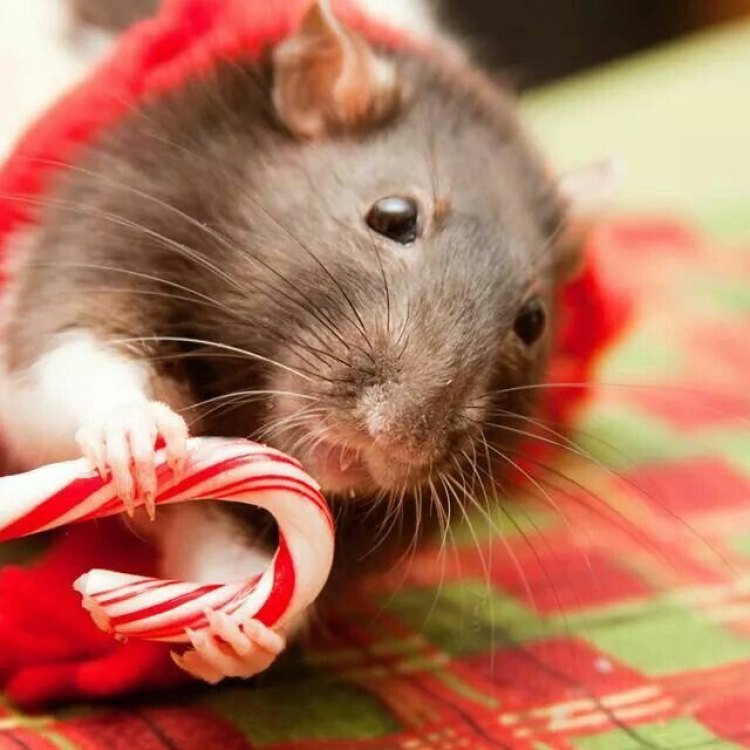
Cane Rat
- Adult Size: Large, weighing between 5 - 10 kg
- Average Lifespan: 3 - 6 years
- Reproduction: Sexual
- Reproductive Behavior: Polygamous
- Sound or Call: Loud whistling or barking sounds
- Migration Pattern: Non-migratory
- Social Groups: Solitary or live in small family groups
- Behavior: Nocturnal and mainly terrestrial
- Threats: Habitat loss and hunting for bushmeat
- Conservation Status: Least Concern
- Impact on Ecosystem: Key ecosystem engineers
- Human Use: Hunted for bushmeat and their fur
- Distinctive Features: Large head with long incisors and long hind legs
- Interesting Facts: Cane rats are capable of running fast and can swim well
- Predator: Leopards, hyenas, and large snakes
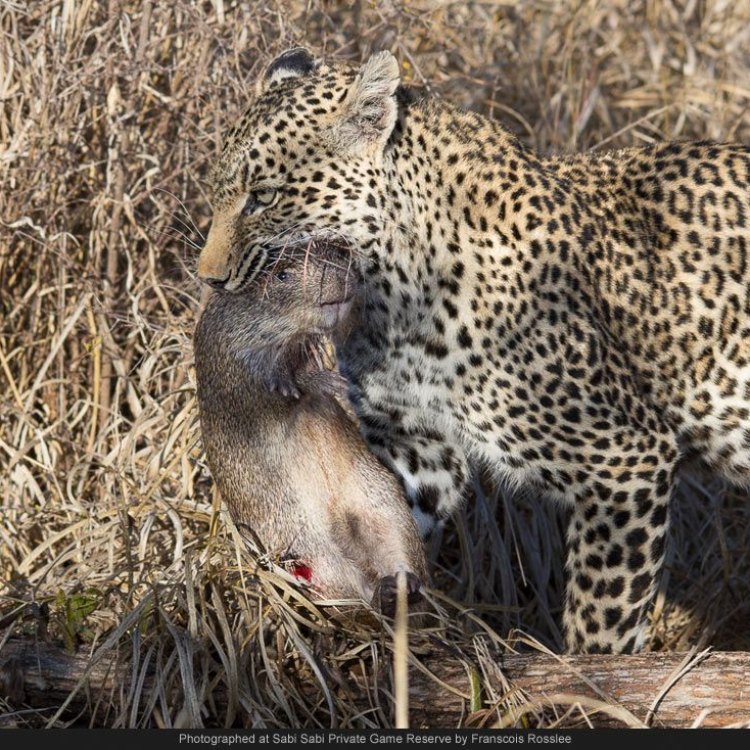
Thryonomys swinderianus
A Unique Species of Africa - The Fascinating Cane Rat
Africa is home to many unique and fascinating animal species, but one that often goes unnoticed is the cane rat. This large rodent may not be the first animal that comes to mind when thinking about African wildlife, but it has some unique features that make it worth learning more about.In this article, we will delve into the world of cane rats and uncover some interesting facts about these creatures, including their size, behavior, and impact on the ecosystem. So, let's take a closer look at this often overlooked African animal PeaceOfAnimals.Com.
A Giant among Rodents
Cane rats, also known as grasscutters, are one of the largest rodents found in Africa. They can grow to be quite sizeable, with adults weighing between 5 to 10 kilograms and measuring up to 70 centimeters in length. They are about the size of a small dog and have a stocky build with a large head and thick hind legs.These animals are primarily herbivores, with their diet consisting mainly of grasses, fruits, and vegetables. Their large size and herbivorous diet make them important contributors to the ecosystem, as they help control vegetation growth and nutrient cycling.
A Relatively Short Lifespan
Cane rats have a relatively short lifespan compared to other large rodents. On average, they live for about 3 to 6 years in the wild. However, in captivity, they can live up to 10 years, making them popular as pets among some African communities.Their short lifespan is due to a combination of factors, including high predation rates, hunting by humans, and their large size, which puts a strain on their bodies Chipoo.
A Polygamous Reproductive Behavior
Cane rats have a unique mating and reproductive behavior. Unlike many other rodents that reproduce quickly and in large numbers, cane rats are polygamous, meaning they mate with multiple partners. This behavior is seen in both males and females, and it allows for genetic diversity within the species.Cane rats reach sexual maturity at around 5 months of age, and breeding can occur throughout the year, with peaks during the rainy season. Females typically give birth to 1 to 6 offspring at a time, and the young are weaned after 4 weeks. Interestingly, female cane rats can mate again within days of giving birth, which allows them to produce multiple litters in a year.
A Loud Bark and Whistle
One of the most unique features of cane rats is their loud vocalizations. They are known for their strong, high-pitched whistling or barking sounds, which they use to communicate with each other.These vocalizations are essential for their social interactions, especially during the breeding season when competition for mates is high. They can also use their calls to warn others of potential predators.
A Solitary or Family-oriented Lifestyle
Cane rats have varied social behaviors, with some individuals leading solitary lives, while others live in small family groups. Solitary individuals are typically males who spend most of their time alone, marking their territory and avoiding other males.On the other hand, female cane rats form close-knit family groups with their young. These groups are essential for the survival of the young, as they provide protection and teach them how to find food and defend themselves against predators.
Nocturnal and Terrestrial Creatures
Cane rats are primarily nocturnal animals, meaning they are most active during the night. During the day, they seek shelter in burrows or dense vegetation to rest and avoid predators.They are also mainly terrestrial animals, spending most of their time on the ground, though they can climb trees if needed. Their long hind legs allow them to move quickly and efficiently on the ground, making them adept at evading predators.
Threats to Survival
Like many other African wildlife, cane rats face numerous threats to their survival. One of the biggest threats is habitat loss due to human activities such as farming, urbanization, and logging.Cane rats are also hunted for their meat, which is considered a delicacy in many African countries. Their fur is also highly valued, leading to illegal hunting and trade. These threats have resulted in a decline in cane rat populations in certain areas, making them listed as a Least Concern species on the IUCN Red List.
Key Ecosystem Engineers
Despite their size, cane rats play a crucial role in maintaining the balance of African ecosystems. They are considered key ecosystem engineers due to their feeding habits and behaviors. For example, their constant grazing and burrowing help regulate vegetation growth and nutrient cycling, which in turn, benefits other plants and animals in the ecosystem.Cane rats also contribute to soil aeration and mixing, which can improve soil quality and allow for better water absorption and plant growth. These small but important functions highlight the value of cane rats in their natural environment.
Human Use and Conservation Efforts
Aside from being hunted for bushmeat and their fur, cane rats are also actively used by humans in some African countries. In Nigeria, for example, they are raised in captivity for their meat, which is considered a delicacy and is in high demand. Their meat is said to be tasty and nutritious, high in protein and low in fat.In recent years, there have been efforts to develop sustainable farming practices for cane rats to reduce their impact on wild populations. This could not only provide a sustainable source of food but also help conserve the species.
Distinctive Features and Interesting Facts
Cane rats have some distinctive features that set them apart from other rodents. Their large head, long incisors, and long hind legs make them instantly recognizable. They also have coarse fur, ranging in color from brown to black, with a white or cream-colored belly.One interesting fact about cane rats is that they are fast runners and good swimmers. Despite their size, they can run up to 23 miles per hour and can swim across small bodies of water with ease. These skills are essential for their survival in the wild, allowing them to escape predators and reach sources of food and water.
Predators of Cane Rats
Like most animals, cane rats have natural predators in their environment. These include large carnivores such as leopards, hyenas, and large snakes. Their loud vocalizations and fast running abilities are essential for avoiding these predators, but they are not always successful in doing so.In some areas, humans also pose a threat to cane rats through hunting and habitat destruction. As the demand for bushmeat and fur increases, so does the pressure on cane rat populations.
In Conclusion
The cane rat may not be as well-known as some of the other African animals, but it is undoubtedly a fascinating and unique species. From its large size and polygamous behavior to its vocalizations and important role in the ecosystem, there is much to discover and appreciate about these creatures.As with many other species, it is crucial to recognize the threats facing cane rats and take steps to protect and conserve them. With sustainable farming practices and efforts to reduce habitat loss, we can ensure that future generations can continue to learn about and be amazed by these giant rodents of Africa.
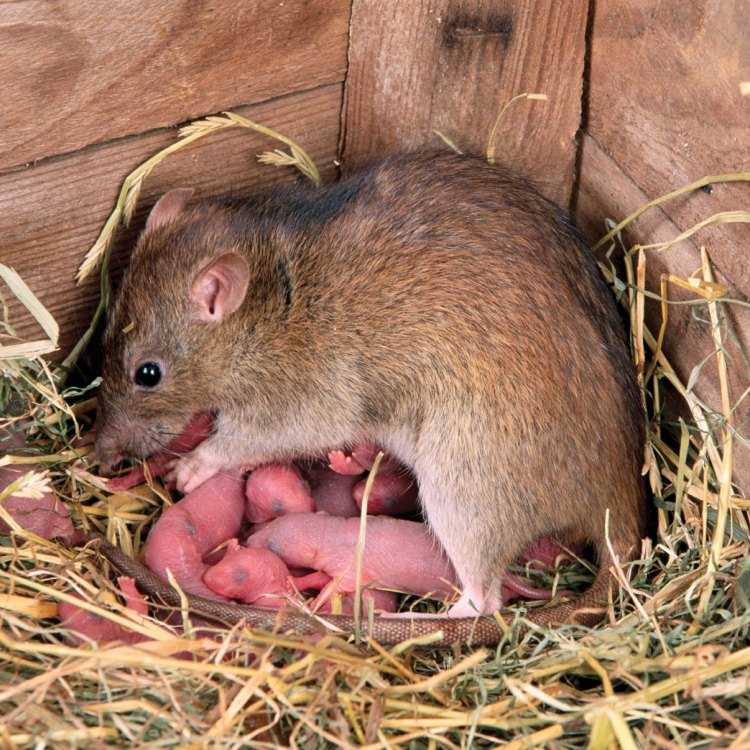
The Fascinating World of Cane Rats: Herbivorous Giants of Africa
Disclaimer: The content provided is for informational purposes only. We cannot guarantee the accuracy of the information on this page 100%. All information provided here may change without prior notice.

